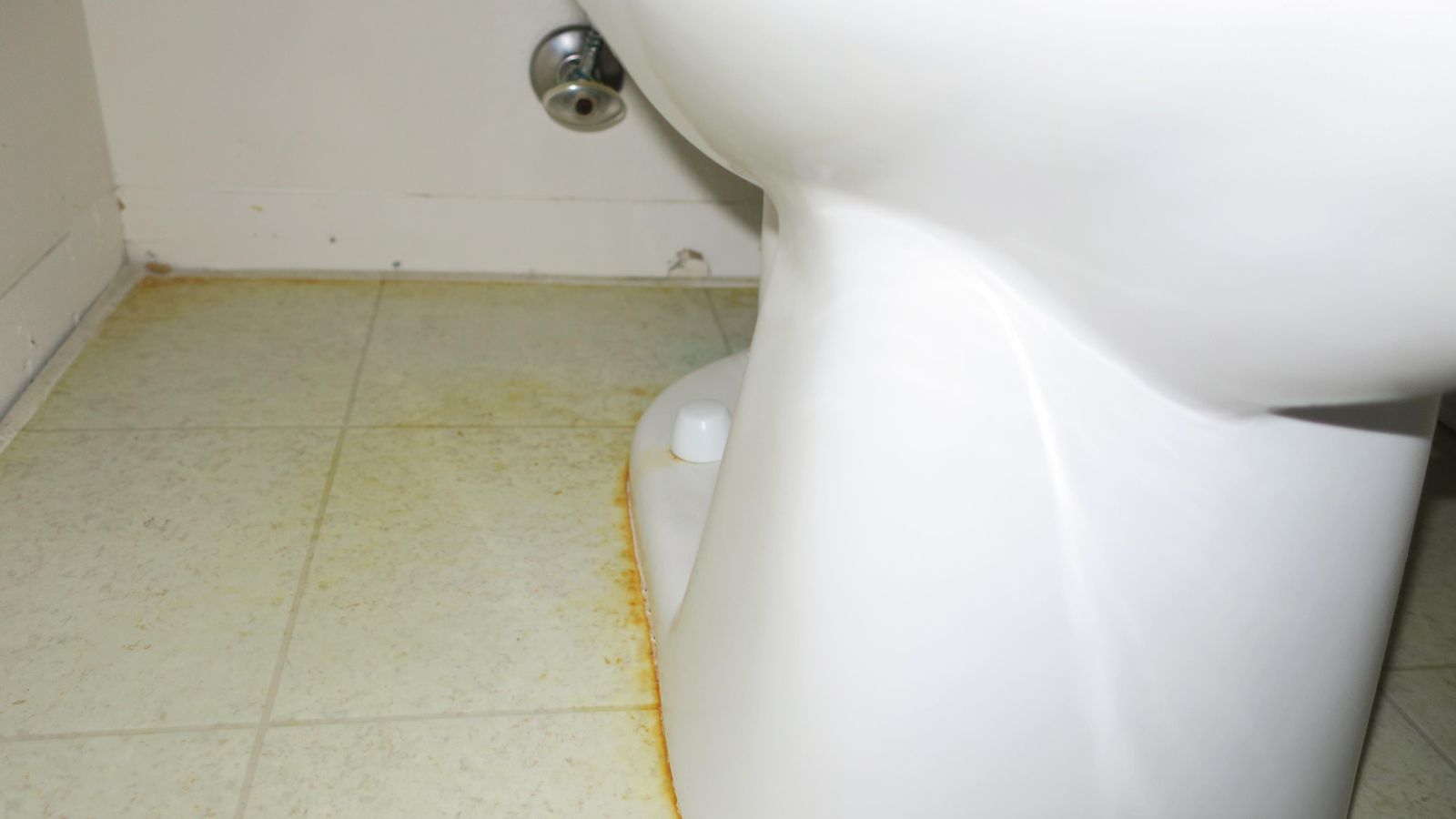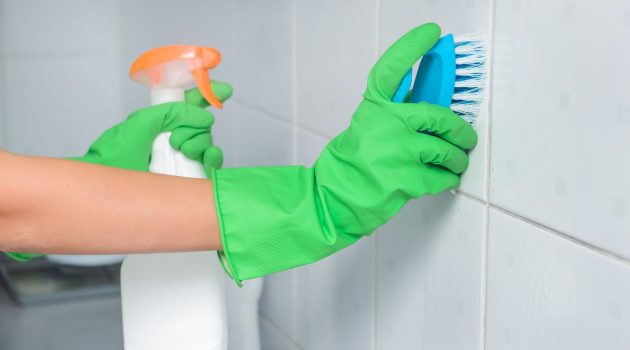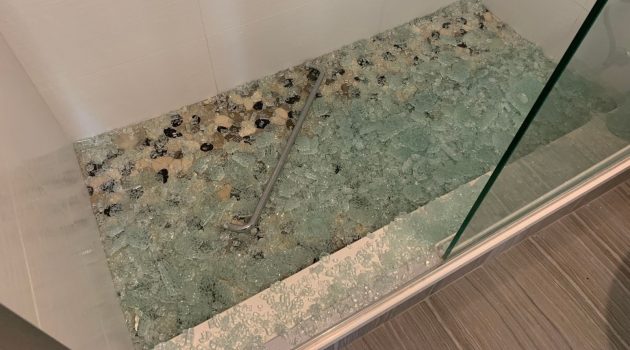Maintaining a clean and hygienic bathroom is important for both your health and comfort. One common issue that can arise is the presence of urine stains around the base of the toilet.
These unsightly marks are not just a matter of aesthetics; they can also contribute to an unpleasant odor and may indicate a larger issue of cleanliness in your bathroom space.
Addressing urine stains promptly helps to ensure that your bathroom remains fresh and sanitary.
With the right approach, you can effectively remove these stains and prevent future occurrences.
Regular cleaning, coupled with some targeted techniques for those stubborn areas, can make a significant difference in the overall appearance of your toilet and bathroom.
1. Identifying the Cause of Urine Stains
Before you tackle those unsightly yellow stains around your toilet, it’s helpful to understand why they’re there.
This can determine your approach to eliminating them and help prevent future occurrences.
Common Reasons for Stains
Urine stains around the toilet base can often be attributed to a few human factors and simple plumbing issues. Here are the most common:
- Improper Aim: This is particularly an issue in households with young children or males. Urine missing the toilet bowl can lead to stains on the bathroom floor.
- Urine Backsplash: When urine hits the water or the sides of the toilet bowl at a forceful angle, it can splash back onto the floor, causing stains.
- Overflowing Toilet Bowl: A clog or blockage leading to an overflow can cause urine to spill out and stain the area around the base.
Inspecting for Plumbing Issues
Your toilet is designed to flush away waste without leaking, but certain plumbing issues could contribute to the formation of urine stains:
- Loose Bolts: If the bolts securing the toilet to the floor become loose, the toilet may shift, allowing urine to seep under the base.
- Worn-Out Wax Ring Seal: A deteriorated seal can cause liquids to leak from the base of the toilet onto the floor, resulting in stains.
It’s important to regularly check these areas to ensure they’re not the cause of the urine stains you’ve noticed.
Handling these issues promptly can significantly reduce the occurrence of future staining.
2. Effective Cleaning Solutions
When tackling urine stains around the base of your toilet, having a variety of effective cleaners at your disposal can make the job easier.
From natural concoctions to powerful commercial solutions, you’ll need the right approach for your specific stain.
Preparing Natural Cleaners
Natural cleaning solutions are not only effective but also eco-friendly and usually less harsh on surfaces. Here’s how you can create your own:
Baking Soda Mixture:
- Combine 1/2 cup of baking soda with 1/4 cup of hydrogen peroxide.
- Add 1 tablespoon of dish detergent for a boosted effect.
Vinegar Solution:
- Mix equal parts of white vinegar and water in a spray bottle for a ready-to-use spray.
- For tougher stains, you can heat the vinegar before mixing it with water.
- Create a paste using lemon juice or grapefruit oil with baking soda, applying it directly to the stain.
Using Commercial Cleaners
Sometimes natural remedies may not suffice, especially for stubborn stains. In these cases:
- Select a commercial cleaning product that’s designed for bathrooms and toilets.
- Make sure to choose a disinfectant cleaner to not only remove stains but also sanitize the area.
- Follow the instructions on the product label for correct usage and safety precautions.
Advanced Stain Removal
For deeply ingrained urine stains, you may need a more aggressive approach:
- Use a toilet bowl scrub with a stiff-bristled brush or pumice stone specifically for toilet cleaning.
- Enzymatic cleaners are particularly effective for organic stains and odors. They break down the components of urine, making it easier to wipe away.
- For disinfection or white toilet bowls, a bleach-based cleaner can be an option. Always use bleach with caution and never mix it with ammonia-based products.
Once you’ve applied a cleaning solution, scrub the area thoroughly and then rinse away any residual cleaner to prevent damage to your toilet finishes or grout.
3. Prevention and Maintenance
To keep your bathroom fresh and hygienic, focusing on prevention and regular maintenance will save you time and effort.
Implement these simple, yet effective, strategies to prevent urine stains and ensure the cleanliness of your toilet’s base.
Routine Cleaning Tips
Establishing a consistent cleaning schedule is paramount. Use disinfectant cleaner with antibacterial properties to effectively maintain your toilet’s base.
For tiles and grout, a mixture of hydrogen peroxide and baking soda can be applied with a brush to remove any potential buildup. Here’s a brief guide:
- Daily: Wipe around the base with disinfectant wipes.
- Weekly: Apply a mixture of vinegar, water, and dish soap — scrub with a brush and rinse.
- Monthly: Inspect and clean the wax ring and caulk to ensure there are no leaks.
Follow these methods to keep the area not just clean but hygienic, preventing stubborn urine stains in the first place.
Protective Measures
Prevent urine stains by employing these practical protective measures:
- Install disposable toilet mats around the base to absorb drips.
- Consider adding splash guards to minimize direct hits to the floor.
By curbing the splashes and spills, you minimize the amount of cleaning needed and protect the integrity of your floor, caulk, and toilet base.
When to Consult a Professional
Sometimes, despite your best efforts, stains may persist or leaks may be due to a failed wax ring or degraded caulk.
If this happens, it’s prudent to consult a professional plumber. They can provide services that go beyond standard cleaning, such as:
- Replacing the toilet’s wax ring.
- Re-caulking the base for a watertight seal.
Remember, involving a professional early can prevent more extensive damage and save costs in the long run.



